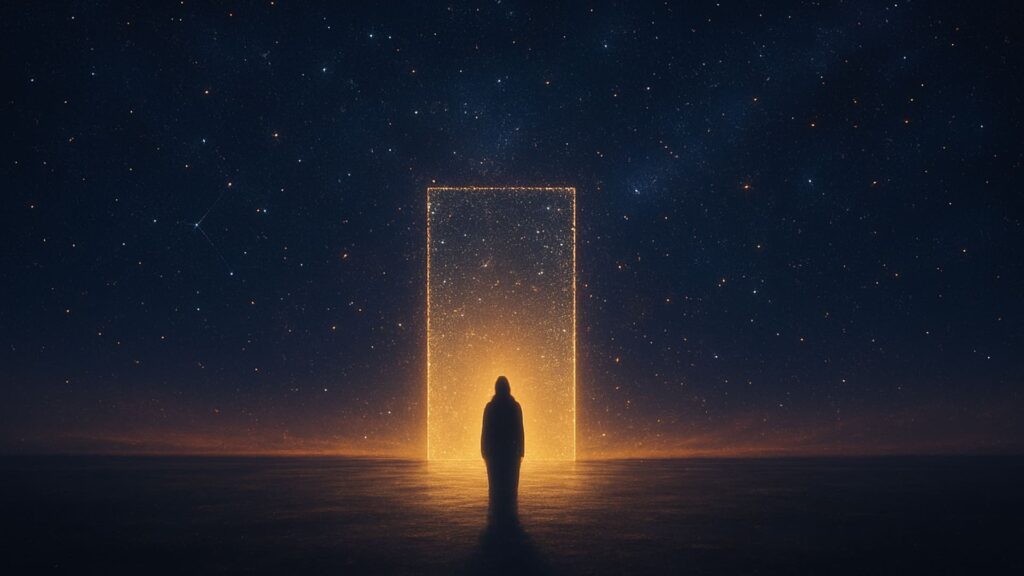The Threshold of Mystery
Death has always been the greatest unknown. From the earliest myths to modern philosophy, humanity has struggled to understand what lies beyond the final breath. For some, death is a wall; for others, it is a doorway. But perhaps it is not an ending at all – only a transition into another state of being, one that our limited perception cannot yet grasp.
This perspective invites us to reconsider our fear of finality. If life is a journey of shifting forms and experiences, then death may simply be another shift – one that moves us into a different kind of reflection. Much like in The Echo of Forgotten Questions – How They Shape Your Life, what we avoid or silence often continues to live within us in hidden ways.
Continuity Beyond the Physical
The body fades, yet the essence we call “self” may continue in ways we struggle to define. Energy does not vanish; it transforms. Memory, influence, and love ripple outward, leaving traces long after the individual is gone.
Consider how someone’s presence lingers in the habits they shaped in us, the stories they told, or even in the dreams that revisit them. Just as the hidden language of dreams, shows us that meaning survives in symbols, death may be another symbolic transformation – less an end, more a translation into another form.
Time and Perspective
Death often feels absolute because we see it through the narrow window of our present life. Yet if time itself is not linear but layered, then death may be less a “full stop” and more a change in vantage point.
Think of it as stepping outside one window and looking through another, as explored in Windows Into the Self – How Perspective Shapes Reality.
Our perspective shifts, and what once seemed invisible may suddenly become part of the view. Perhaps death is simply another window into being, offering a perspective that life cannot provide.
The Shadow That Gives Light Meaning
Life gains depth because it is finite. Just as shadows define light, the presence of death defines our sense of living. Without the awareness of mortality, our choices, our urgency, and even our love might lose their sharpness.
This interplay mirrors what we explored in dance of shadows and light in our minds clarity needs mystery, presence needs absence, and light needs darkness. Death, then, is not an interruption but part of the design – the shadow that sharpens our appreciation of light.
Living With Death as Companion
Rather than pushing death into the margins of fear, we can invite it as a quiet companion. To live fully is not to deny mortality but to let it remind us of the fragility and beauty of each moment.
When we accept that death is not the end, but a stage of transformation, we open ourselves to a more profound way of being. We listen more closely, love more deeply, and reflect more patiently. Life becomes not about holding tightly to permanence, but about embracing impermanence as part of the dance.
Closing Thought
Death is not a conclusion, but a continuation. It is not the silence after music, but the pause that allows a new rhythm to emerge. By embracing it not as an end but as a transformation, we begin to see our existence with greater depth, humility, and wonder.
The end of the body does not mean the end of meaning. Just as echoes, dreams, and reflections continue long after their first appearance, so too does life extend beyond what we can perceive. Perhaps, in the end, death is not the closing of the book – but the turning of a page.

